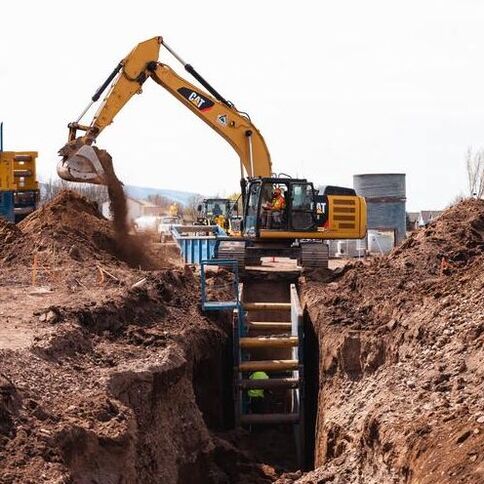|
When it comes to open excavations or trenches, OSHA allows four different types of protection: benching, sloping, shoring, and shielding. Shielding involves the use of trench boxes, shields, or other types of support to prevent cave-ins. This blog will discuss when a trench box can be used and how to safely use them while working below grade.
When to Use Trench Boxes Per OSHA requirements (1926.652), employees must be protected when excavations are more than 5ft in depth. Trench boxes are a great protection system when workers are needed where benching or sloping of the soil is not possible. Trench boxes can also be utilized for utility work where large excavations are unnecessary. When selecting a trench box or other type of support, it is important to consider factors such as soil classification, depth of cut, water content within the soil, and other loads in the vicinity. When using trench boxes, some rules to follow include:
Installing Trench Boxes When installing or removing trench boxes, the protection of workers is always critical. Make sure to identify your soil type as well as the limitations of your trench box before it is used. Some rules to installing/removing trench boxes include:
Excavations and trenches have potential hazards that are fatal if not handled correctly. Make sure your competent person understands the types of protective systems and which is best for their situation. To keep the conversation going, download the Trenching & Excavation Toolbox Talk (TBT) or comment below.
0 Comments
|
AuthorSTAC Admin Categories
All
Archives
July 2024
|


 RSS Feed
RSS Feed